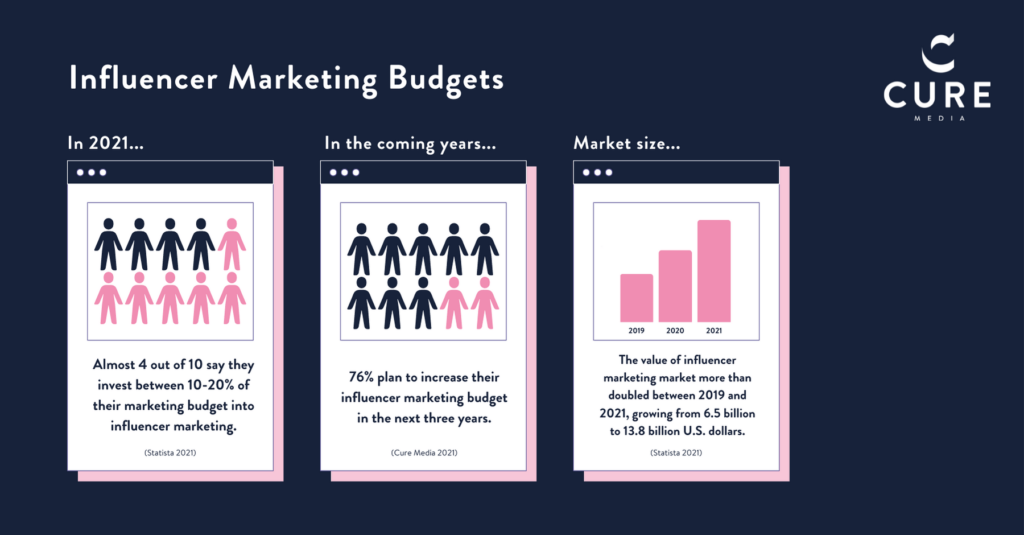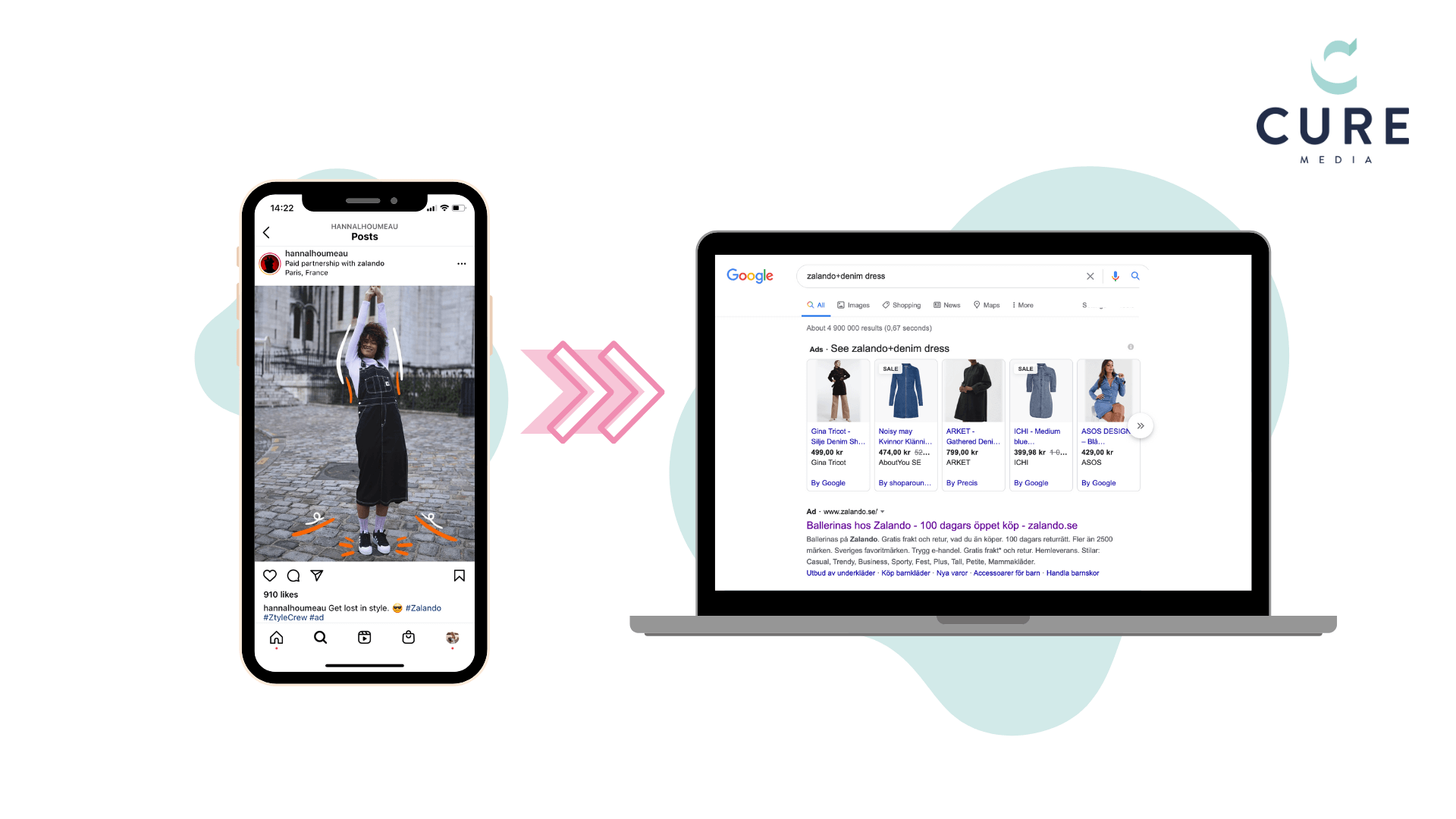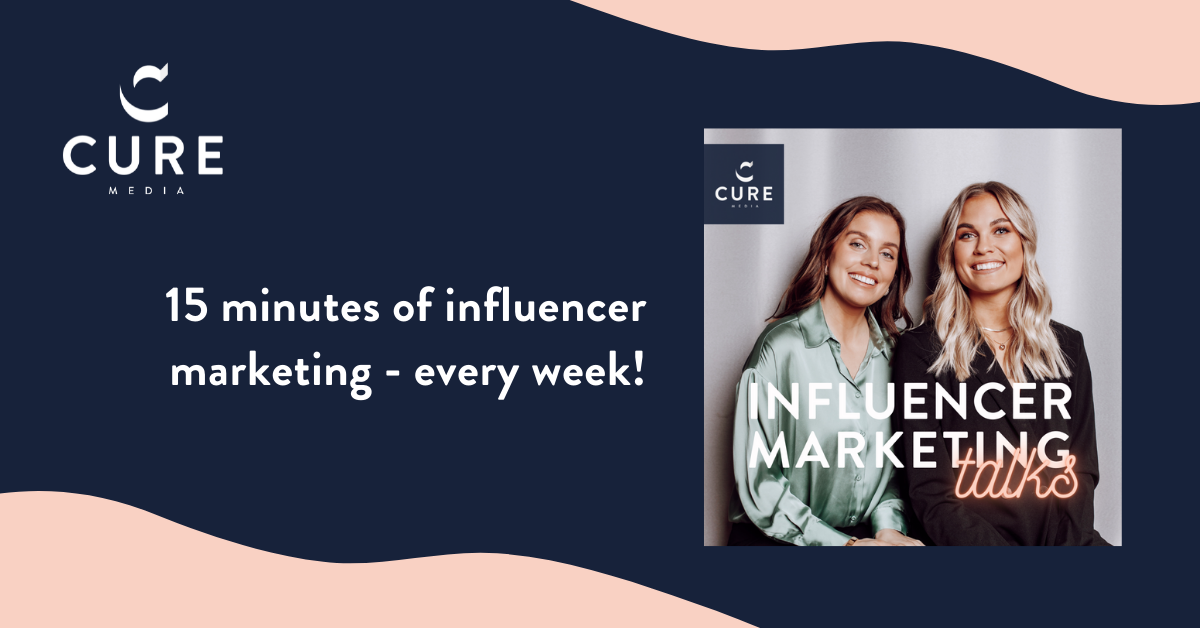An ever-increasing number of companies are shifting greater portions of their marketing budgets to influencer marketing. Recently released figures show that the value of the industry has more than doubled since 2019, growing from $6.5 billion to $13.8 billion in only three years.
From Instagram’s industry-shaking video-first strategy shift, to the gradual emergence from lockdown, 2021 has been a transformative year for influencer marketing. But there’s no time to dwell on the past. In this blog post, we get to the bottom of the biggest question on everyone’s lips right now: What does influencer marketing have in store for 2022?
What are the influencer marketing trends for 2022?
1. Data-driven influencer marketing
To keep pace with the rapid development of the influencer marketing industry, a data-driven approach to the channel is increasingly important – otherwise you risk throwing money down the drain.
It will come as no surprise that the more money brands invest in influencer marketing, the more important the ROI becomes, and quantifiable data is just as integral here as it is in any other channel to both achieve higher returns and to track the returns you do get.

Data-driven influencer marketing gives you greater efficiency and generally higher returns. At Cure Media, you’ll find data woven into every aspect of our approach to influencer marketing, from beginning to end but, perhaps most importantly, in the middle while activations are still running.
Data is invaluable to us when it comes to consulting with brands on the KPIs they need and identifying the influencer accounts that will help them achieve them, but it’s also something we rely heavily on to track performance and optimise campaigns on a continuous basis. While not as common in the industry, with many influencer campaigns still aesthetically focused and brand-centric, our data-informed approach has been refined over our many years in the industry and continues to be one of our most powerful weapons, enabling us to combine brand and performance marketing within a singular channel.
Learn about the value of having a data-driven influencer marketing strategy from our Co-founder, Kristian Melå.
To maximise the returns you see from influencer marketing, we highly recommend replicating this data-driven strategy within your own activations. The applications for data are wide-ranging, from spotting the content formats that will perform best with your target audience to establishing the appropriate amount of budget to invest, but using it in any format is better than none at all.
As audiences’ feeds become ever more saturated, data will become key to success in influencer marketing in 2022 and the coming years. But not without an always-on approach! Which takes us to the next trend you’ll want to anticipate…
2. Always-on influencer marketing
Historically, a short term approach has been somewhat of a norm within influencer marketing. One-off campaigns that span just a few weeks or even a few days are unfortunately not a rare sight. However, more and more companies are moving away from campaign-based influencer marketing in favour of an always-on strategy. When talking about measuring and optimising, an always-on strategy has been critical to our own success and longevity in a rapidly innovating field.
But what is an always-on approach? Always-on influencer marketing means that you as a brand establish a consistent presence on social media via the influencers that your target audience follows, relates to and relies on. The idea is to ensure that you appear in your consumers’ feeds (and lives) during their “moments of need”, but also to do the groundwork over time to ensure you are top of mind when that purchasing window arrives. With brand loyalty at an all time low, it will usually take multiple touches to convert prospects nowadays – something a one-off campaign simply cannot accomplish.
View this post on Instagram
The combination of a data driven approach and working always-on is going to be critical in 2022 – trust us on this one! With data in hand you have the technical tools to succeed and with an always-on approach you will have the possibility to measure and optimise your influencer marketing efforts.
Look at it like training for a marathon. You’ve got all the equipment: a pair of leggings to keep you limber, a running belt crammed full of energy gels, and the best pair of arch-supporting, ankle-guarding running shoes money can buy. But if you’ve only put in one practice run once prior to the race then you probably don’t stand the best chance of winning…or finishing, for that matter. Instead, you should have committed to a training regime months ago, acclimatising to your optimal pace and building up your endurance and fitness.
With always-on influencer marketing, you combine your equipment (data) and your hours of training (always-on) to maximise your performance. Only then will you realise the true extent of what you can achieve.
3. Deconstructing the influencer marketing silo
Treating influencer marketing as a silo function means making a limited number of occasional impacts, one-off successes that exist outside of your wider marketing strategy and therefore cannot be built upon or leveraged effectively. You may even see short-term increases in sales but in the long run it will be difficult to maintain your place top-of-mind among your target group (or perhaps even to reach it).
The fact that the effect is short-term means influencer marketing in a silo is not something that we recommend. Influencer marketing has the potential to create an extraordinary halo effect on other marketing channels, so by failing to give it a meaningful place within your marketing mix you will generally be waving goodbye to some of its greatest benefits.
Instead, while working always-on within your data-driven strategy, you should maintain a holistic understanding of how influencer marketing ties into your other marketing channels, and informs and interacts with your wider strategy. And be sure to keep an open mind as to how the different channels can collaborate and complement each other.
Let’s say, you’re not alone if you think measuring the effect of influencer marketing is a challenge. Learn how to approach this challenge in our webinar together with our Head of Marketing, Sanna Ödmark and Head of Customer Success, Emma Lundsten here.
View this post on Instagram
So, what kind of positive spillover effects can influencer marketing generate for your brand?
Well, the fact is that not every customer will make use of an influencer’s discount code, and not every follower will buy via the swipe up link or in-app shopping options. Let’s say you’re scrolling through your feed on your lunch hour at work. You find the perfect dress for next week’s party – great! But then you realise you need to rush into a meeting. When you come home later that day, you remember the dress and the brand, but not necessarily which influencer pointed you in its direction. So instead, you open Google and type in “denim dress + fashion brand” and buy the dress through your browser.

Without a holistic understanding of a user’s journey and influencer marketing’s place in it, this purchase would be incorrectly attributed to Google Search. In turn, you may decrease your influencer spend to redirect budget to paid search…only to be dismayed when revenue figures drop, perhaps not even realising that you had inadvertently turned off the tap on one of your biggest sales sources.
Hear our customer Sebastian Jansson at Lensway about how they measure influencer marketing beyond the direct results in this 20-minute podcast episode:
In 2022, you have to be able to track your consumer’s journey across channels and throughout a full marketing and shopping funnel to understand where they convert and why. Only by incorporating influencer marketing into your marketing tactics (instead of leaving it as an outlier) can you gain a holistic understanding of ROI and ensure maximum effectiveness for your brand.
4. Cross-channel campaigns
In 2012, the average social media user had three social accounts. Today, that number is up to eight. With the ever growing range of social platforms and formats for brands to adapt to, it can feel impossible to maintain any sense of cohesion throughout. However, as the average user adopts more platforms into daily use, cross-channel campaigns will become non-negotiable for brands.
While two platforms may seem alike on the surface, building a cross-channel campaign that incorporates multiple social outlets is not a task you should approach lightly. To give you a brief example, both Instagram and TikTok have short-form content opportunities like Instagram Stories and the 15-second video option on TikTok. However, it would be a mistake to assume that you can simply recycle the same content across both platforms and expect the two audiences to respond with equal enthusiasm.
TikTok often has a more raw and quick edge to its content, it should grab the viewer’s attention directly, entertain them, and most importantly, ride the waves of current viral trends. Instagram Stories on the other hand, is less susceptible to meme culture and instead houses audiences who prefer behind-the-scenes footage and interactive content.
To gain an understanding of what different social media marketing tactics there are out there and how fashion brands benefit from them, we invited Emily Sun, Campaign Manager at Cure Media to this podcast episode.
Both brands and influencers must walk the tightrope between staying platform-appropriate and brand-relevant, ensuring they create content that speaks to the preferences of the different audience without compromising their own identity. And, as new platforms and formats will arise and brands are expected to accommodate them too, remember to maintain a sense of lineality to your social strategy; create stories that are distinct but cohesive. To call back to trend three, this will be much easier to achieve if you avoid operating channels in silo – each platform should play into the next.
Before you despair though, rest assured that no one is recommending you familiarise yourself to native levels with every single platform available. To do so would likely be impossible anyway. Instead, this is exactly where influencers come in. Having employed data to point you in the direction of the best-fit influencers within each platform, the ones who are already engaging your target audience, trust in them to inform your approach and don’t steer them too much in the brief. They have years and years of experience in creating content that their followers (aka you audience) likes, and will know best how to translate your message for them.
Summing it up
There are many benefits of having a data driven strategy and an always-on approach for your influencer marketing in 2022, and as an award-winning influencer marketing agency, we know that combining these tactics is the most effective way to achieve the best results for your brand. To be able to track the results, you need to look at the channel with a holistic mindset and not treat it in a silo. No man is an island and no platform or influencer marketing strategy should be either – each piece should play into the next.
Want to learn more about all things influencer marketing? Don’t miss our podcast! Each week, we cover topics around digital and social media to help you take your marketing strategy to the next level. Also, join the conversations with topic experts from the industry!



